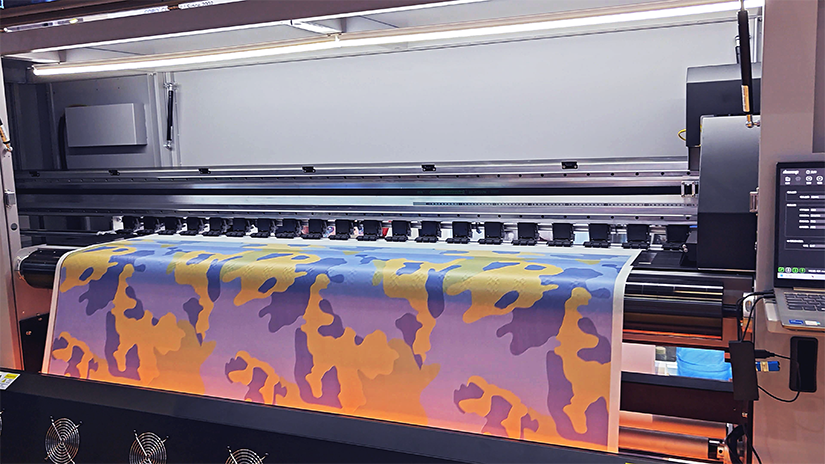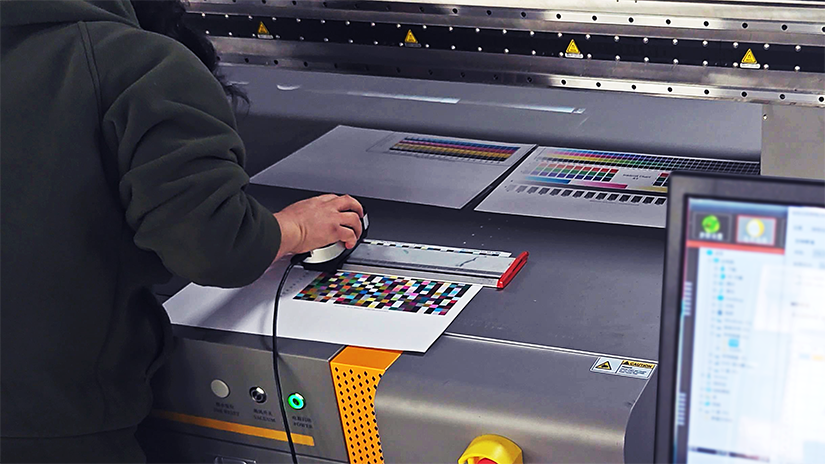In connection with the core components of inkjet equipment (including printheads, control systems, ink, and mechanical & electrical parts, etc.), the emergence of pass lines is closely linked to the coordination of various equipment modules, the properties of consumables, and parameter settings. The specific causes are as follows:

1. Mechanical and Electrical Factors (related to the equipment’s mechanical structure)
- Insufficient paper feeding accuracy: Problems like jamming in the paper transport mechanism or uneven stepping distances lead to poor stability in paper conveyance, causing misalignment during multi-pass overlapping.
- Deviation in calibration accuracy: Misalignment of printheads or abnormal calibration of scanning trajectories directly affects the precision of pattern superposition in multiple scans, resulting in obvious boundary lines.
2. Control System (Board) Factors (related to the mainboard/control modules)
- Stepping calculation errors: Inaccurate calculations by the mainboard regarding paper movement distance and printhead scanning step length lead to desynchronization between mechanical actions and commands, forming regular stripes.
- Abnormal feathering parameters: Deviations in edge transition processing result in harsh superposition of pattern edges across different passes, making the traces more prominent.
3. Ink Factors (related to ink consumables)
- Unreasonable density: Overly thick ink is prone to clogging nozzles, while overly thin ink causes uneven diffusion, leading to abnormal local ink output.
- Abnormal saturation: Imbalanced color concentration leads to a layered appearance during superposition due to differences in ink volume.
- Inappropriate drying speed: Excessively fast drying may cause ink breakage, while overly slow drying results in smearing and superposition, undermining the uniformity of the pattern.

4. Material Factors (related to printing media)
- Coating defects: Uneven coating, local damage, or bubbles on the material surface cause inconsistent ink adhesion.
- Poor ink absorption: Issues such as hydrophobic materials or excessively thick coatings prevent uniform ink penetration, resulting in local light and dark variations.
5. ICC Parameter Factors (related to color management systems)
- Ink volume overload: The ink volume set by ICC exceeds the actual ink absorption capacity of the material, leading to ink accumulation, smearing, and visible pass boundaries.
- Uneven linear transitions: Discontinuities in color gradients form obvious color bands, amplifying the superposition traces.

6. Design Image Factors (related to RIP processing)
- Inconsistent layer parameters: Significant differences in layer resolution or color depth lead to inconsistent output accuracy after RIP processing, causing uneven development during superposition.
- Mismatched modes/formats: Image modes (e.g., RGB vs. CMYK) or formats that are incompatible with equipment requirements result in deviations in color conversion and data parsing.
- Chaotic layering logic: Misaligned detail layers or conflicting transparency settings cause abnormal overlapping of pattern elements during multi-pass superposition.
7. Special Color Factors (related to color characteristics)
Colors such as gray, forest green, crimson, violet, and gradients are prone to pass lines because of their complex superposition requirements (which need precise multi-color proportioning) and high sensitivity to ink volume. Even minor deviations in ink volume or positioning between passes can easily reveal layered traces.
Note: In the Chinese market, most manufacturers only master 2-3 core modules of the equipment (e.g., mechanical systems + ink supply, mechanical systems + ink supply + ink). No manufacturer can simultaneously master mechanical systems, ink supply, circuit boards, and ink. Poor compatibility between modules indirectly exacerbates the aforementioned issues, increasing the probability of pass lines.